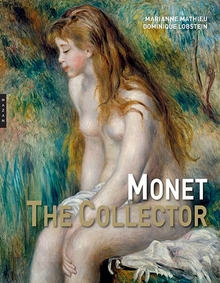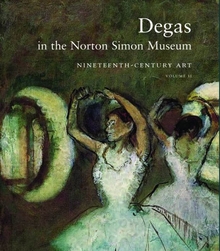Painted Love
WARNING
You are viewing an older version of the Yalebooks website. Please visit out new website with more updated information and a better user experience: https://www.yalebooks.com
Prostitution and French Art of the Impressionist Era
Hollis Clayson

Read this book online via the A&AePortal, our art and architectural history eBook platform. To learn more about how to access this book, please contact us.
Out of Print
Prostitution was widespread in nineteenth-century Paris, and as French streets filled with prostitutes, French art and literature of the period paralleled this development. In this engrossing book, Hollis Clayson explains why. She provides the first description and analysis of French artistic interest in women prostitutes, examining how the subject was treated in the art of the 1870s and 1880s by such avant-garde painters as Cezanne, Degas, Manet, and Renoir, as well as by academic and low-brow painters who were their contemporaries.
Clayson illuminates not only the imagery of prostitution—with its contradictory connotations of disgust and fascination-but also issues and problems relevant to women and men in patriarchal society. She discuses the conspicuous sexual commerce during this era and the resulting public panic about the deterioration of social life and mores. She describes the system that evolved of regulating prostitutes and the subsequent rise of clandestine prostitutes who escaped police regulation and who were condemned both for blurring social boundaries and for spreading sexual licentiousness in their moral and social superiors. Clayson argues that the subject of covert prostitution was especially attractive to vanguard painters because it embodied key notions of modernity: it exemplified the commercialization and the ambiguity of modern life.
"This readable and original book is the only serious study of the visual representation of prostitution during this period. An excellent and important work."—Linda Nochlin, Yale University
"This book's greatest qualities reside in the thoroughness of Clayson's research about her subject and in the diversity of the works she studied. . . . While Clayson invites readers to take a second look at familiar paintings by Degas, Manet, Renoir and Cézanne, . . . she also leads them to consider academic classics, cartoons, drawings and book illustrations. . . . Painted Love does not read at all like a polemic. The author's pictorial analyses, supported by her extensive research, make for a balanced book full of revelations about the artists and their epoch; and the beautiful and clever layout . . . doubles its interest and enjoyment."—Christine Schwartz, Newsday (Fanfare)
"Although prostitution was depicted throughout French art of the nineteenth century, Clayson's solid feminist research focuses upon the years 1874-86, when exhibitions were held by impressionists. . . . While looking at whether female prostitutes during the late nineteenth century were subject to scapegoating (citing Parisian society's fear of syphilis), Clayson finds a significant correlation with current North American society's suspicion of artists, homosexuals, and disenfranchised others (citing our society's fear of Aids). This thought-provoking addition for art collections contains both full-color and black-and-white illustrations, in conjunction with fine printing and design."—Booklist
"Clayson deals with an important and fascinating topic—the image of the prostitute in late nineteenth-century French painting. . . . While focusing on such major figures as Degas and Renoir, she discusses their paintings in the context of works by lesser-known artists such as Eva Gonzales and Henri Gervex."—Choice
"Lucid and engaging."—Sara Suleri, Yale Review
"Bracing in its rigor and its unflinching refusal to compromise."—Jeannene M. Przyblyski, Nineteenth-Century Contexts
"Painted Love is one of those rare publications that can shake things up, cause one to question the status quo, and emerge as a seminal text in the field. This is Clayson's first book; I hope it is the first of many."—Julie Springer, Belles Lettres
"Clayson provides the reader with a rich dialectical reading of images too often hailed solely for their innovative formal qualities. She reads these images with a woman's gaze and a thorough grasp of the sexual history of nineteenth-century France, skillfully relating her insights to current conditions of women's rights to regulate their own sexuality. . . . An astute analysis of male sexual politics in the realm of art beloved by the public solely for its visual beauty and seemingly innocuous subject matter."—Therese Dolan, Journal of the History of Sexuality
"Original and provocative . . . There is probably no art historical topic that cries out more for a feminist's attention, and for her own particular subjectivity, than the subtly and not-so-subtly commodified bodies of women, in this case working-class women in France in the later nineteenth century."—Eunice Lipton, Art Journal
Publication Date: December 25, 1991
63 b/w + 31 color illus.








